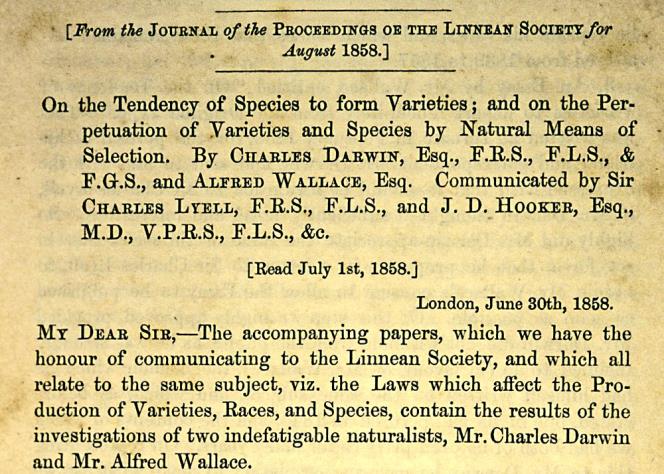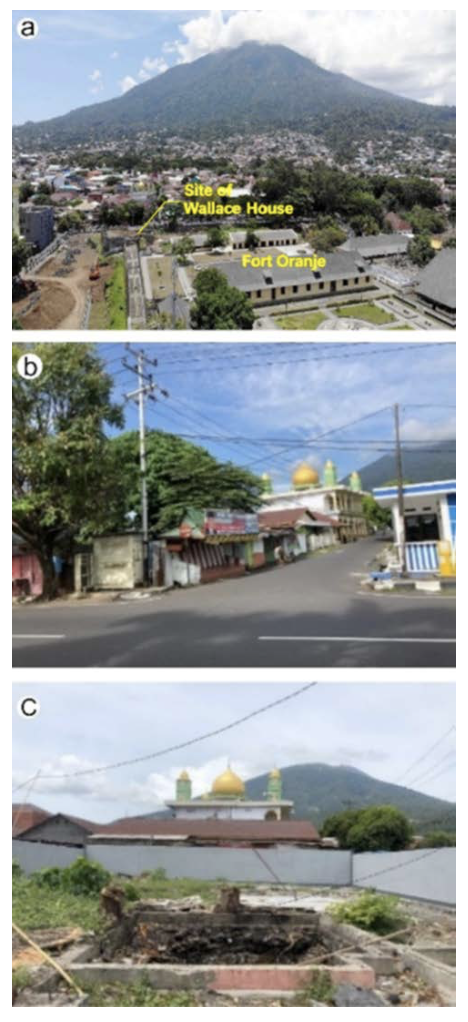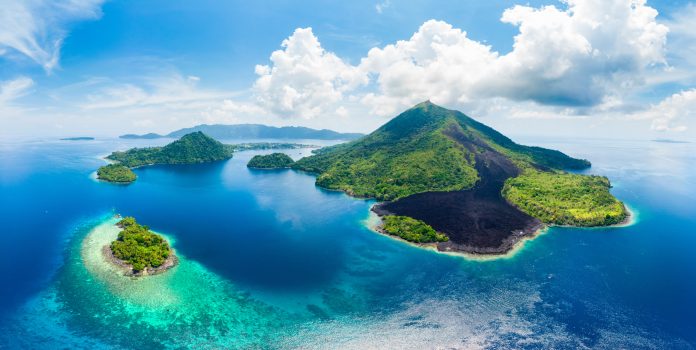Hydrogeologist Paul Whincup explains why the Alfred Russel Wallace house on Ternate is one of the most significant scientific historical sites in Indonesia
Ternate is a small volcanic island in the Moluccas of Indonesia, famously known as the original Spice Island and fought over by the Portuguese, Spanish, British, and Dutch. It was there that Alfred Russel Wallace based himself from 1858 to 1862 to earn a livelihood as a collector of birds of paradise for sale to European collectors.

The Ternate Letter
Soon after he took up residence, he was collecting in the village of Dodinga on Halmahera Island. He was bedridden with a tropical fever when he experienced an epiphany and, over a few days, wrote out his theory of evolution through natural selection. On 1 March, he returned to his rented house in Ternate, where he penned a letter to Charles Darwin (the Ternate Letter), attaching his theory, which was subsequently published in August 1858 in the Linnean Society journal, along with a presentation by Darwin on the same theme. It was the Ternate Letter which caused Darwin to concentrate his efforts on the preparation of On the Origin of the Species, published in 1859.

a) The site of the Wallace House; Photo Sinclair Stammers; b) View from Fort Oranje to the Oranje Site across Jln Merdeka to Jln Pipit, formerly the track used by Wallace; Photo George Beccaloni ©, 2019; c) The site in February 2020 after it had been cleared and boarded; Photo Krithika Varagur 2021.
The site of the Ternate house is recognised as the most important historical site in Indonesia and was the subject of debate for almost 80 years. It appears that interest in the location of the house began during the Second World War, when the Japanese occupied Ternate. However, there was then a lull of more than 40 years before interest was reignited with the endorsement of two locations by Ternate City. Firstly, the Sultan’s House in 1986 was superseded in 2008 by the Santiong House. In 2012, George Beccaloni, a Wallace scholar, while in Ternate advising the British comedian Bill Bailey on a Wallace documentary, recognised that the Santiong House did not meet the descriptions given by Wallace in his book, The Malay Archipelago. However, without more specific data, the location of the house remained unresolved. The author, a hydrogeologist, saw Wallace’s mention of the presence of an old deep well as the key factor to be determined and, in October 2018, initiated further research, including a survey of old deep wells. One of these wells precisely matched Wallace’s descriptions and led to the successful identification of the exact house location, now formally adopted by Ternate City as the Oranje Site because of its proximity to Fort Oranje and the Spice Museum.
Wallace describes his house in The Malay Archipelago as follows: ‘There is of course only one floor. The walls are of stone up to three feet high; on this are strong squared posts supporting the roof, everywhere except in the veranda filled in with the leaf-stems of the sago palm, fitted neatly in wooden framing. The floor is of stucco, and the ceilings are like the walls. The house is forty feet square consists of four rooms, a hall, and two verandas, and is surrounded by a wilderness of fruit trees.’ The old well is not shown, but it is located to the rear of the house.

Since the formal announcement by the mayor of Ternate in September 2019, the value of the Oranje site has increased severalfold. The COVID-19 epidemic has also significantly impacted available funds and donations for purchasing the site. However, the expectation is that, in time, the site will be purchased and a replica of the house will be built to serve as a Wallace Museum and research centre.

This work is licensed under Creative Commons Attribution-NonCommercial-NoDerivatives 4.0 International.











